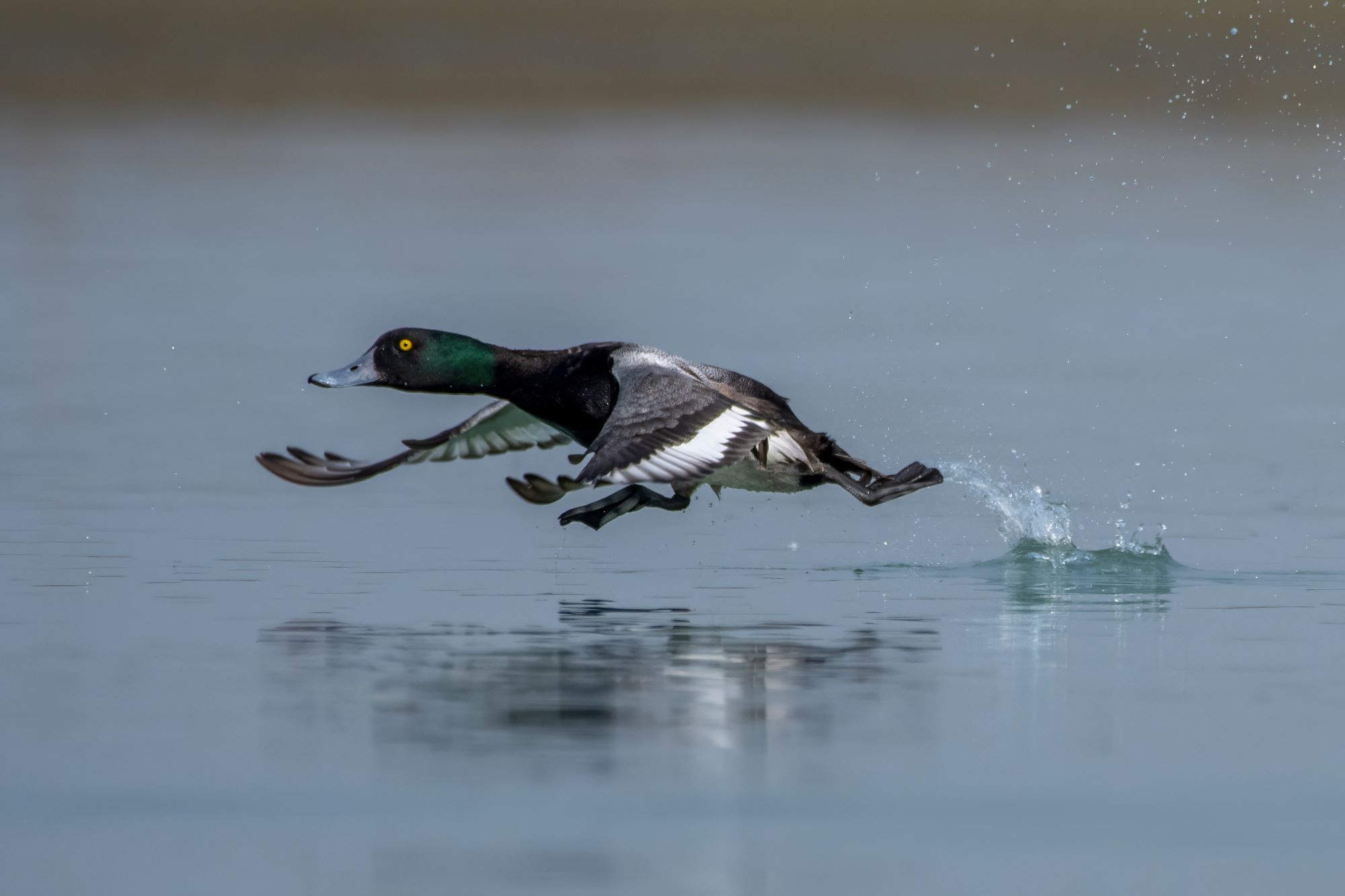
Greater Scaups in Utah
Greater Scaups, while not common in Utah, occasionally grace the state's larger water bodies, offering a rare and exciting sighting for bird enthusiasts. These diving ducks, known scientifically as Aythya marila, are typically found in colder northern regions but can be observed in Utah during their migration periods. The males are striking with glossy, dark heads and bright white flanks, contrasting sharply against their black backs. Females are more subdued, with brown plumage and a distinctive white patch near the base of their bills. In Utah, Greater Scaups are typically seen on larger lakes and reservoirs, where they find the open water necessary for diving and foraging.
The diet of Greater Scaups is primarily composed of mollusks, crustaceans, and aquatic plants, sourced from their underwater foraging. Their diving behavior is a key aspect of their survival, allowing them to access food sources unavailable to many other waterfowl species. In Utah, their presence is an indicator of healthy aquatic ecosystems, as they require clear, unpolluted waters rich in aquatic life. The occasional sighting of Greater Scaups in Utah's larger lakes suggests these areas maintain the ecological diversity necessary to support a range of waterfowl species, even those that are not commonly found in the region.
Greater Scaups' migration patterns, which bring them briefly to Utah, underscore the state's role in the broader migratory routes of North American waterfowl. While they breed in the northern reaches of North America and Eurasia, during migration, they can travel great distances, with some stopping in Utah's suitable habitats. These migrations are critical for the species' survival, as they move to regions that provide the necessary resources for their seasonal needs.
For birdwatchers in Utah, the infrequent appearance of Greater Scaups is a noteworthy event. Their rarity in the state adds to the excitement of spotting these birds, making them a prized sighting for local birders and nature photographers. Observing their distinctive diving behavior and the males' striking plumage can be particularly rewarding, adding to the diversity of birdwatching experiences available in Utah.
Conservation of aquatic habitats is crucial for the occasional visitors like the Greater Scaups in Utah. Protecting these environments ensures that migratory waterfowl have the resources they need during their journeys. Efforts to maintain clean, healthy waterways not only benefit the more common local species but also provide vital stopover points for migratory birds like the Greater Scaup. The presence of these ducks, even if infrequent, is a reminder of the interconnectedness of ecosystems and the importance of conservation efforts to preserve the natural heritage of regions like Utah.